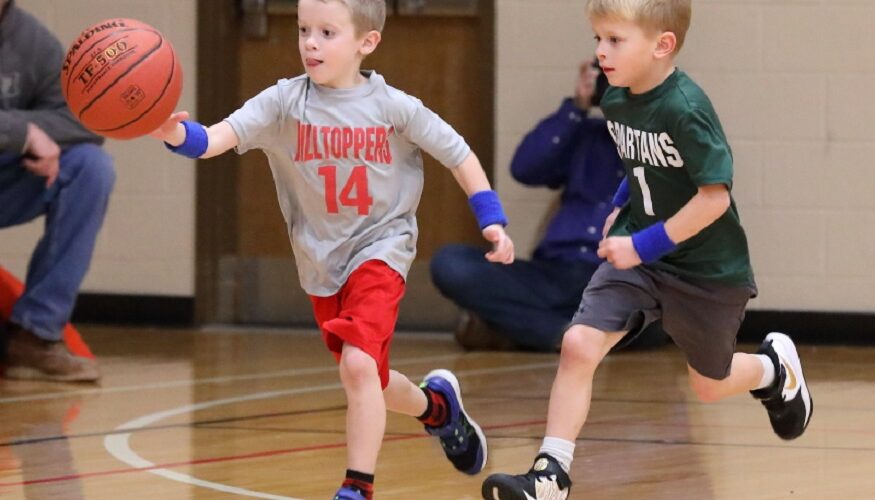An excellent basketball team should have the fluidity of a murmuration, which is a large flock of birds swooping together in harmony. Their actions seem to be choreographed when they shoot basketball, yet they are genuinely improvisational. A bird can expect the motions of the group and avoid mid-air collisions with them. And this dance is captivating when seen from a distance.
The game’s creator, James Naismith, envisioned a dance like this as a significant component of the game. He believed that the game should educate itself – that five players would learn to operate together with no teacher. Look back to the first year LeBron James joined the Miami Heat, along with many other new players, and you’ll see that there’s still validity in this. However, the Heat’s core would win several NBA championships, but not in their first season together, when they battled to develop a sense of unity in catch and shoot basketball on the court. A successful basketball team obviously benefits from having talented players on the floor. Still, it takes more than just skill to achieve success on the court.
However, although there is no straightforward method to teach anticipation to players, there are a variety of team abilities that a coach can quickly enhance by focusing on them, planning for time, and practicing.
This is how it works:
Passing: This is actually the foundation on which the game is constructed. Passing needs both skills by the player and anticipation by the entire team. On attack, make sure that the players understand how to pass to space rather than to the person, similar to soccer. This will help the team become more adept at anticipating one another’s actions. When on defense, focus on defending the passing lanes rather than attacking the ball handler.
Rebounding: Has anybody out there ever played a board game where you were rewarded with consecutive rounds or punished by having your turn skipped? The basketball equivalent is called rebounding. If your team received two shots every possession, but the other team received just one, how would you feel? Receiving exercises may help you improve your timing as the ball comes off the rim on offense. Block out — block out — block out! That’s how you defend on the defensive.
Shooting: If you cannot score, you will lose. Elite teams keep at least four players on the floor who can make 20-foot jumpers regularly. According to the coaches ‘ instructions, players should shoot the ball at a 45-degree angle with their feet planted and an inch below the back of the hoop while on offense. Put your hands in the faces of shooters while you’re on defense (blocked shots are overrated). Concentrate on your footwork, weak-side help, and making shooters feel uncomfortable.
Speed: Nothing beats the combination of all the elements listed above: speed. Although it is almost challenging to teach speed, skill and attentiveness may undoubtedly be taught. In addition, believe it or not, your players will arrive at the locations ahead of the speedsters. Teach your point guard how to penetrate the defense while you’re on offense. This is essential for establishing a fluid attack that moves the ball both within and outside the defense. The whole offense, except for setting screens or preparing for an open look, should be on the move. On defense, you should be more concerned with the pace of the rebound after the shot. If your team receives a rebound or makes a shot to inbound, they must be prepared to transition back to offense before the opposing team can set up their defense. The first step toward success is starting with receiving the ball and delivering an outlet pass to a recognized position where your team’s point guard expects to receive the pass and is prepared to run with it.
Fouls: In our experience as game designers, we can guarantee you that basketball is a very well-balanced game to play. The three-point shot and the foul are the two mechanisms that allow a David team to play against a Goliath team. The foul is also underutilized from a tactical standpoint and is misunderstood because of the referee’s arbitrary decision. On offense, identify the greatest offensive player on the other side and use the first half of the game to constantly pursue him or her throughout the game. Keep an eye out for this player’s foul. It simply takes a few minutes until the player’s coach has this player sitting on the sidelines. Make your free throws as well. These are, literally, free points. When playing defense, use your feet rather than your hands to keep the ball out of your hands. Concentrate on protecting the passing lanes and putting a hand in front of the shooter’s eyes as much as possible.
Mindset: The best way to win is to be well prepared, as experts would advise you to do. Team attention is fostered by effective preparation procedures. And concentration is required for successful implementation. Effective, repeated execution builds trust within the whole team. Through this shared confidence, which is based on complete trust and anticipation, you will see your players cease to think as individuals and flow as a single murmuration. And that is the definition of winning basketball.
Conclusion:
In a basketball game, the best strategy to score more points than your opponent is to maximize your team’s physical, mental, and psychological components as much as possible. In order to overcome a physically superior team, excellent strategies for shooting in basketball and psychological attitudes must be used throughout the game.

